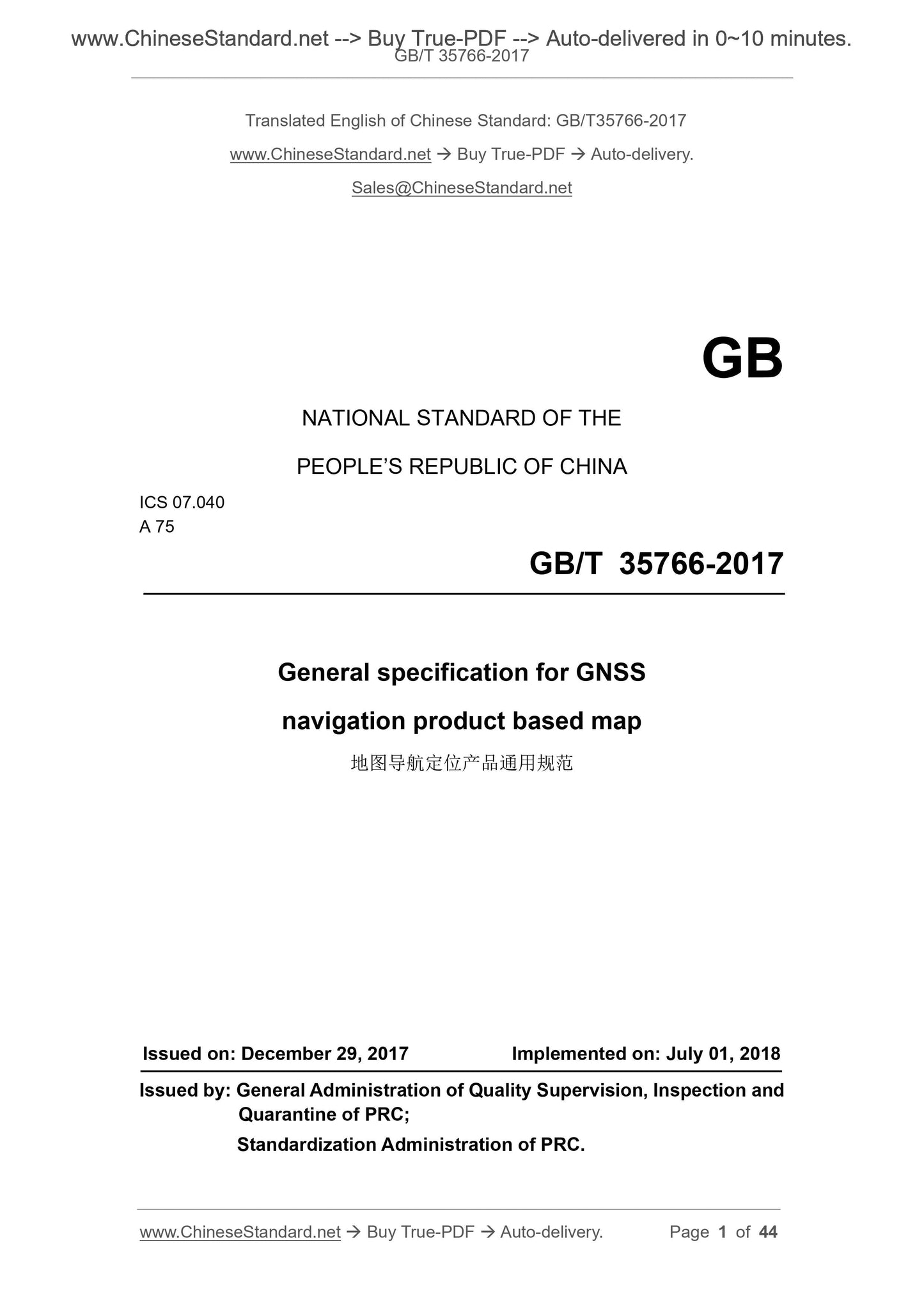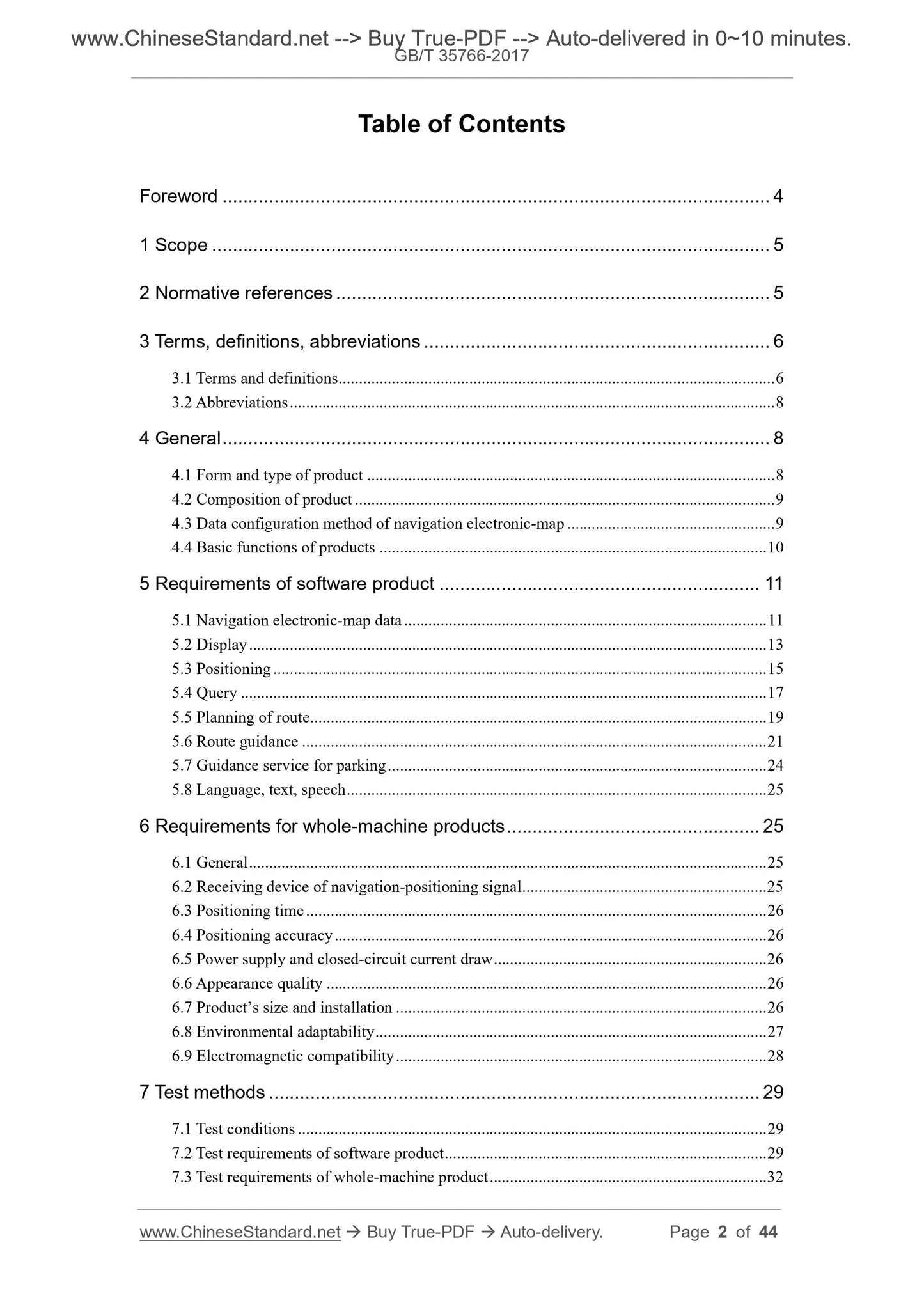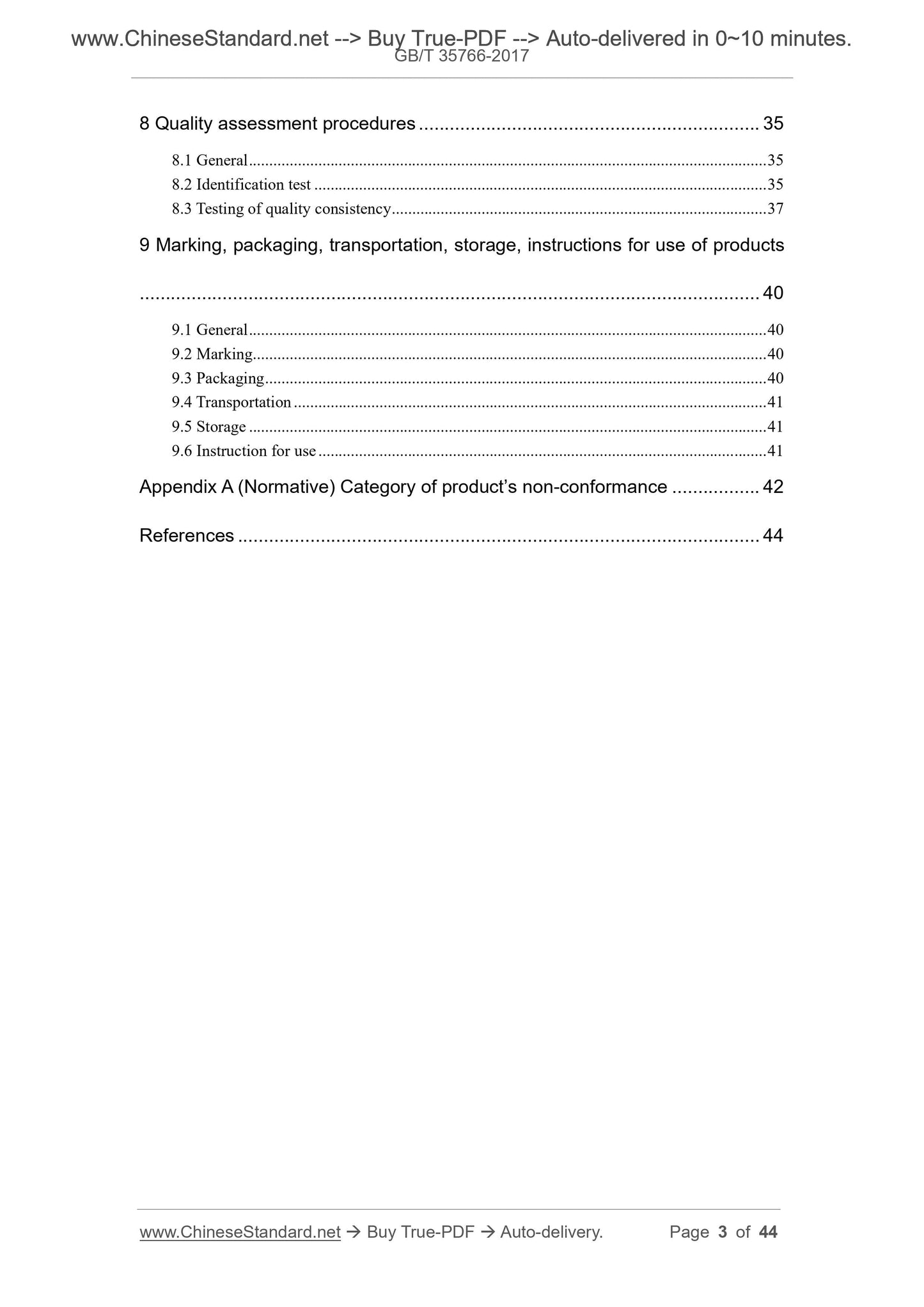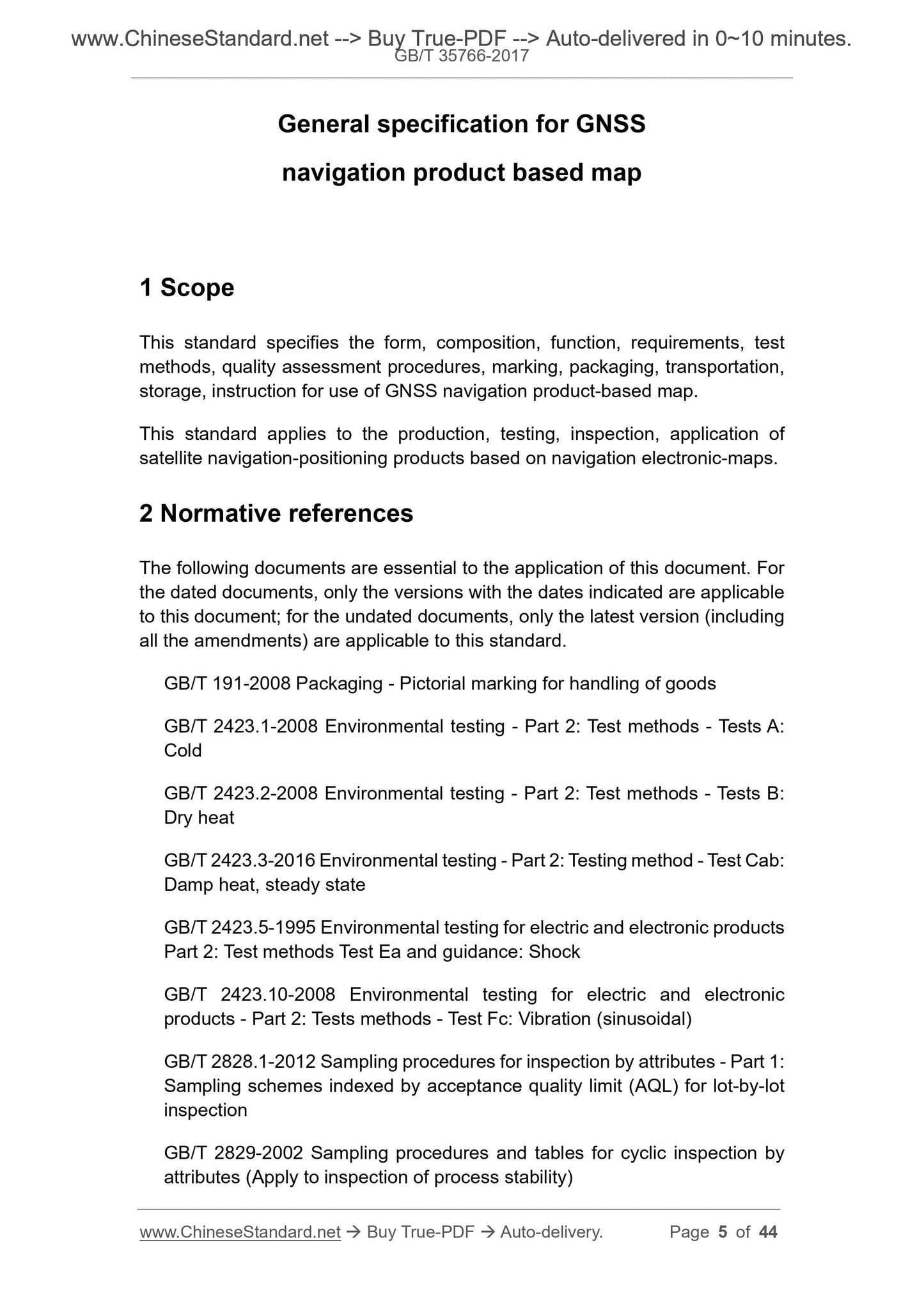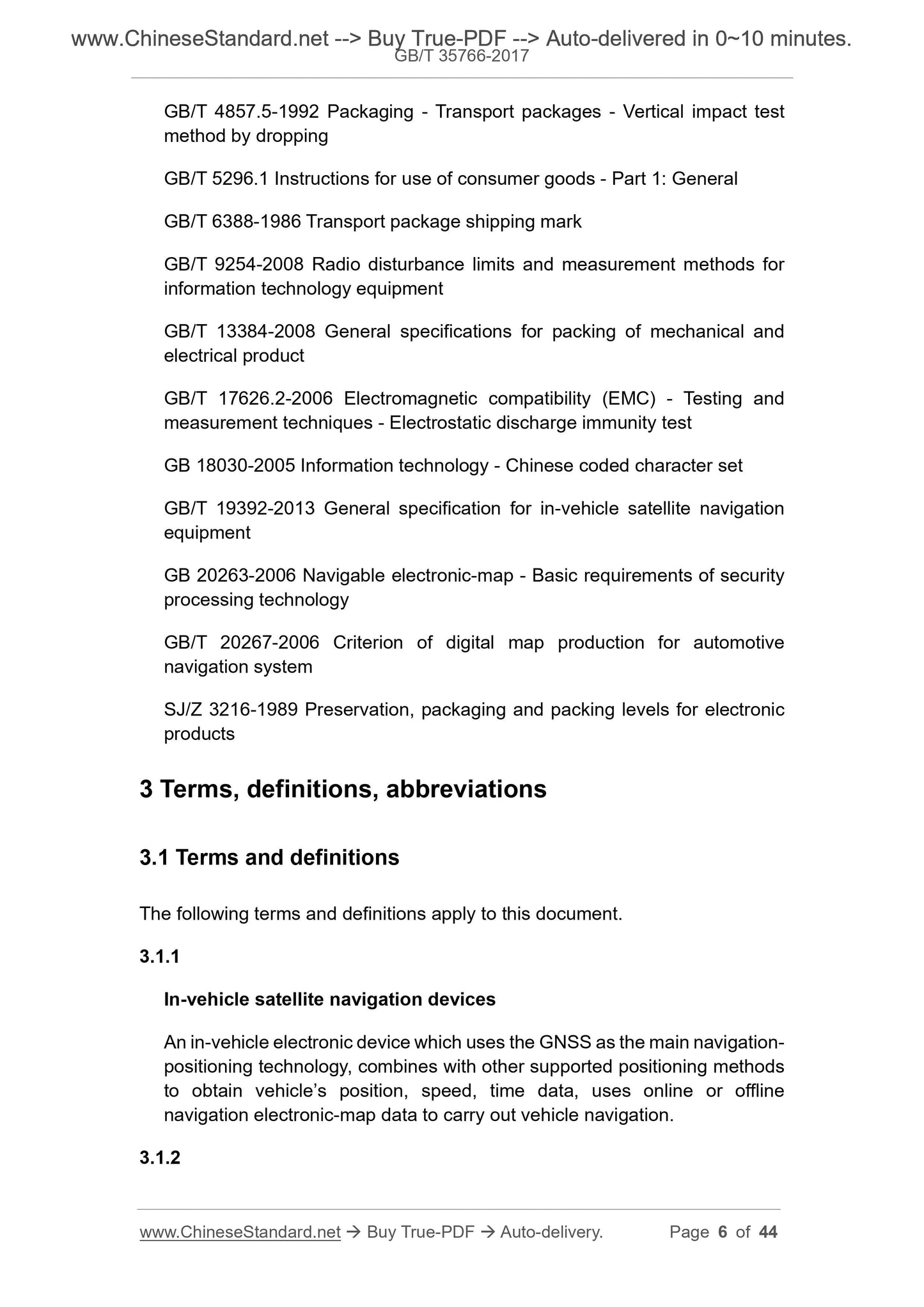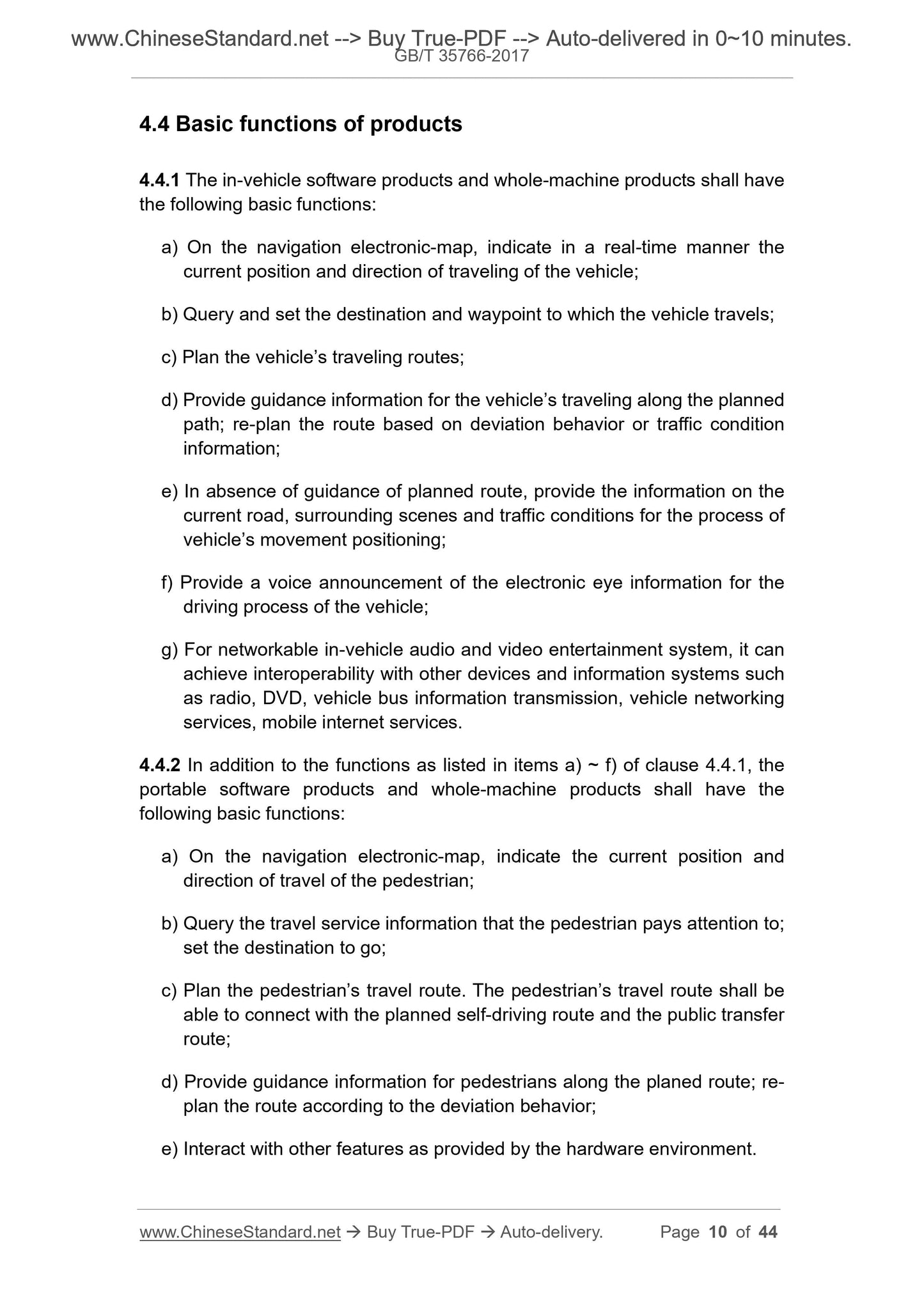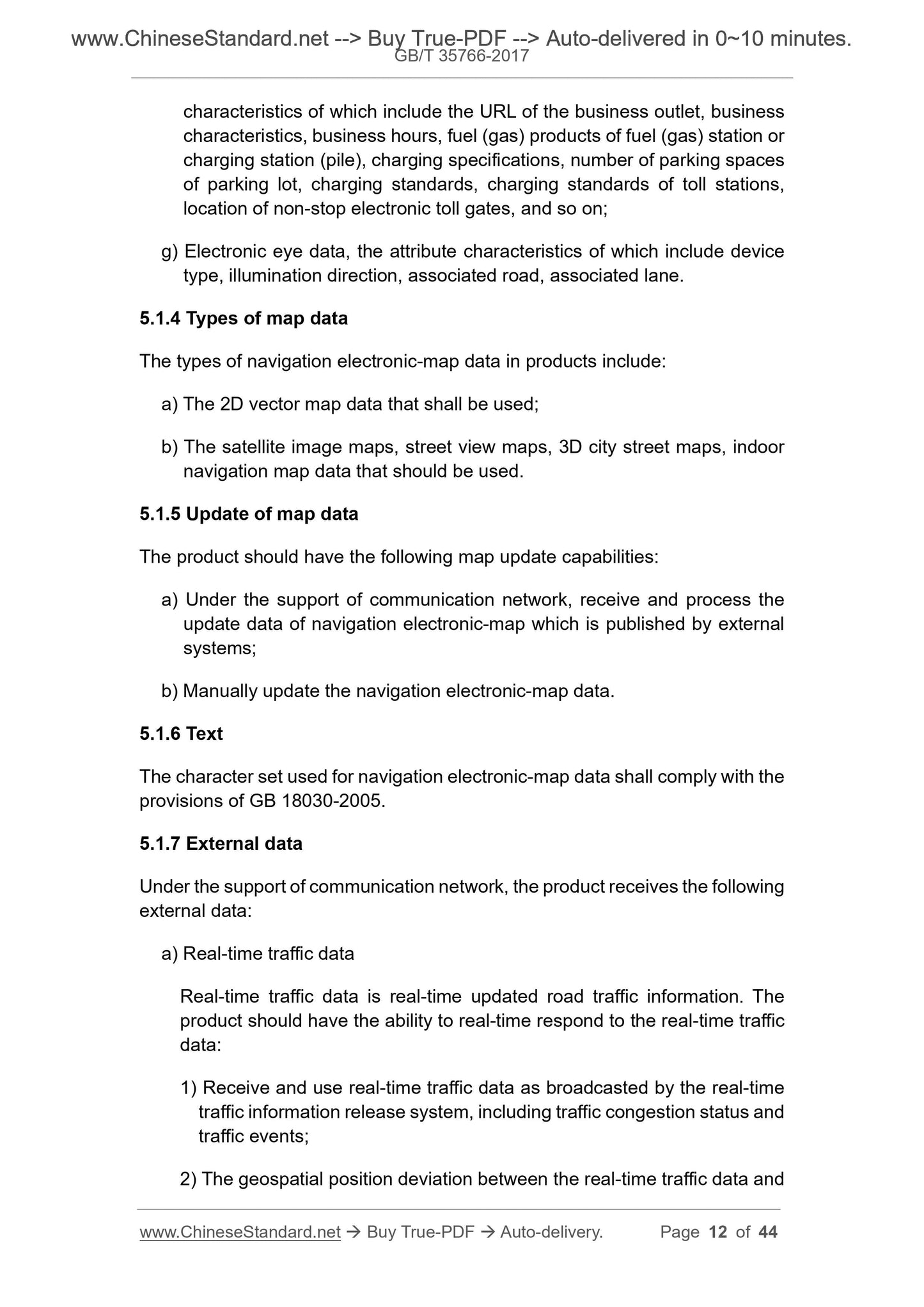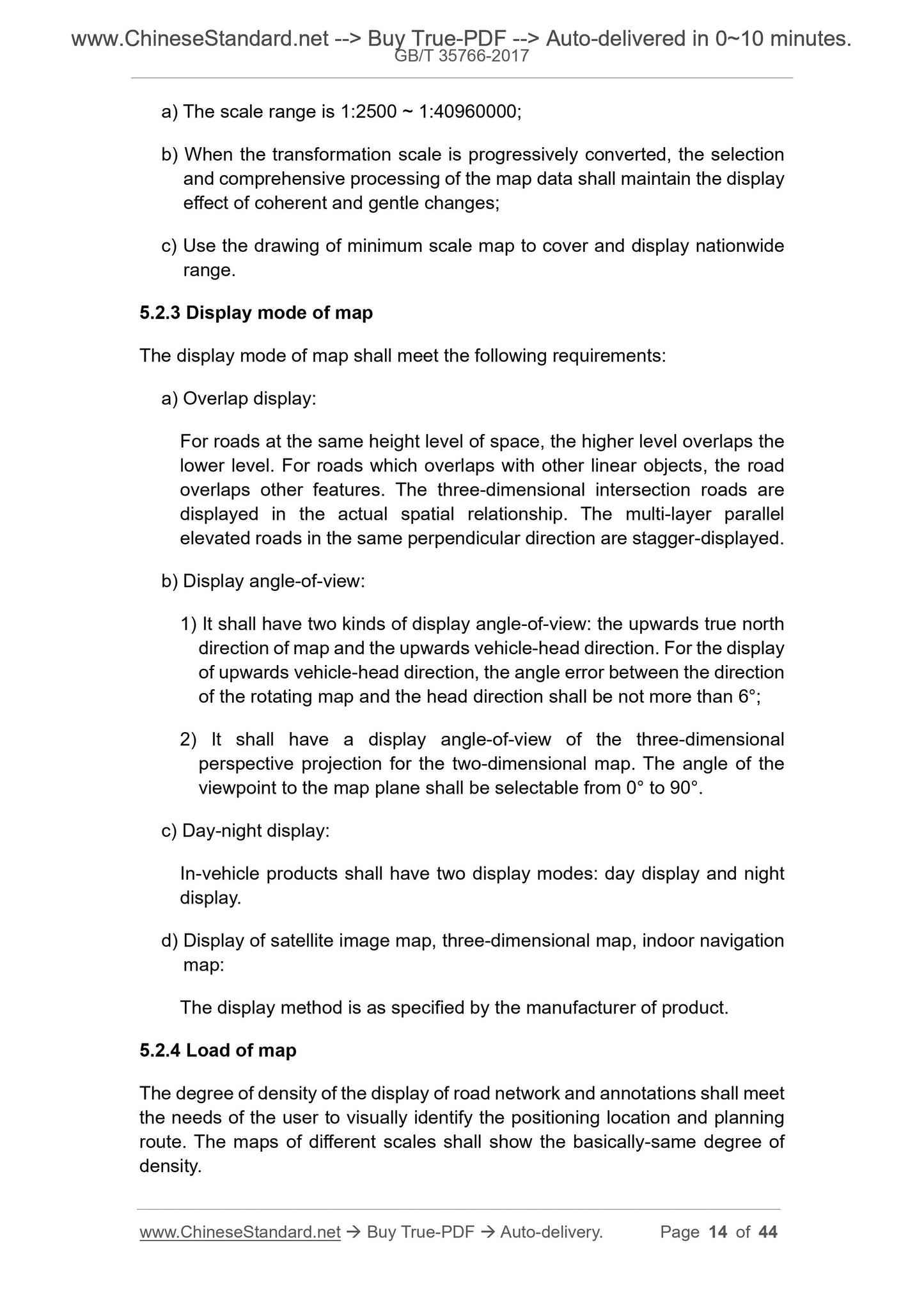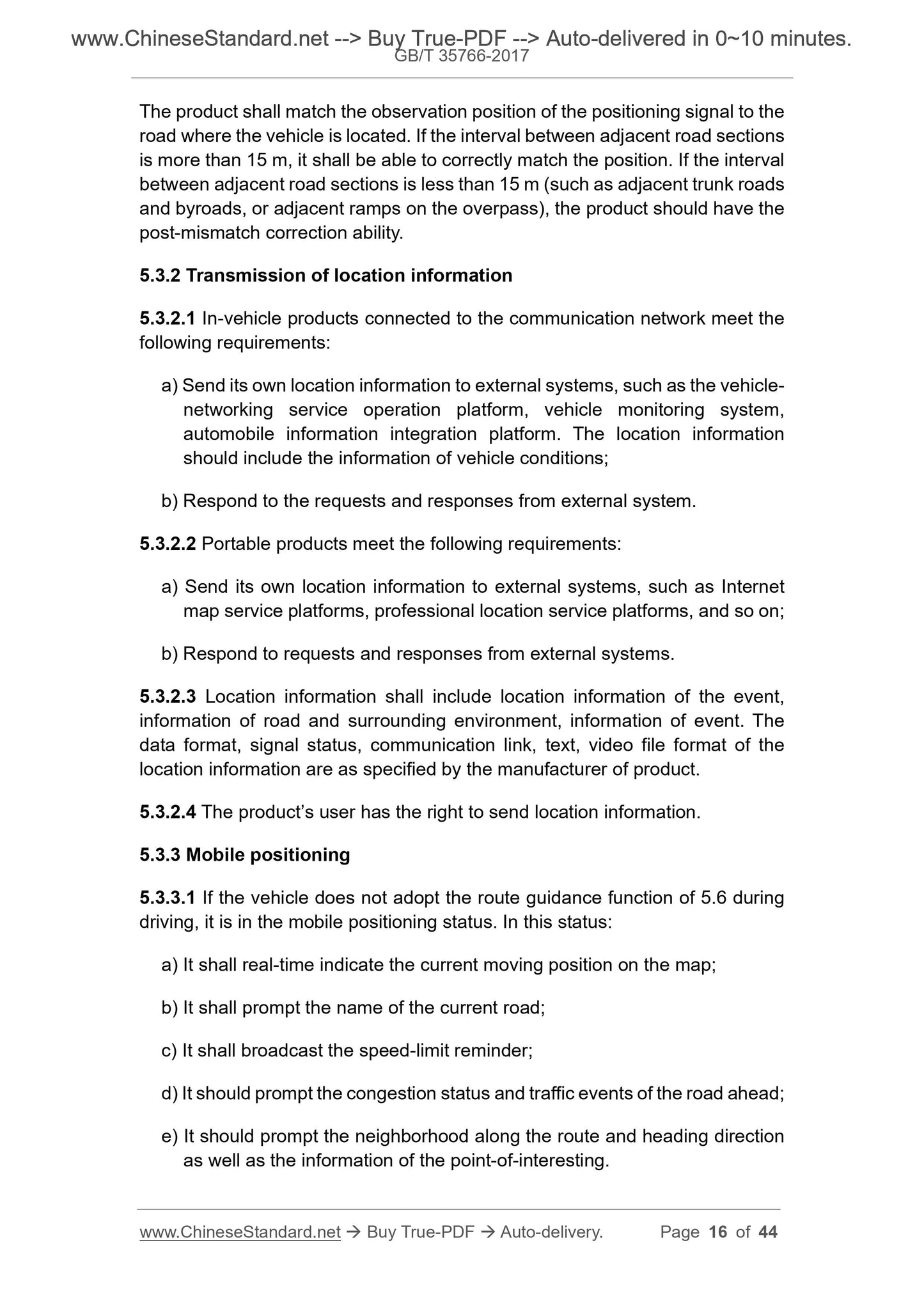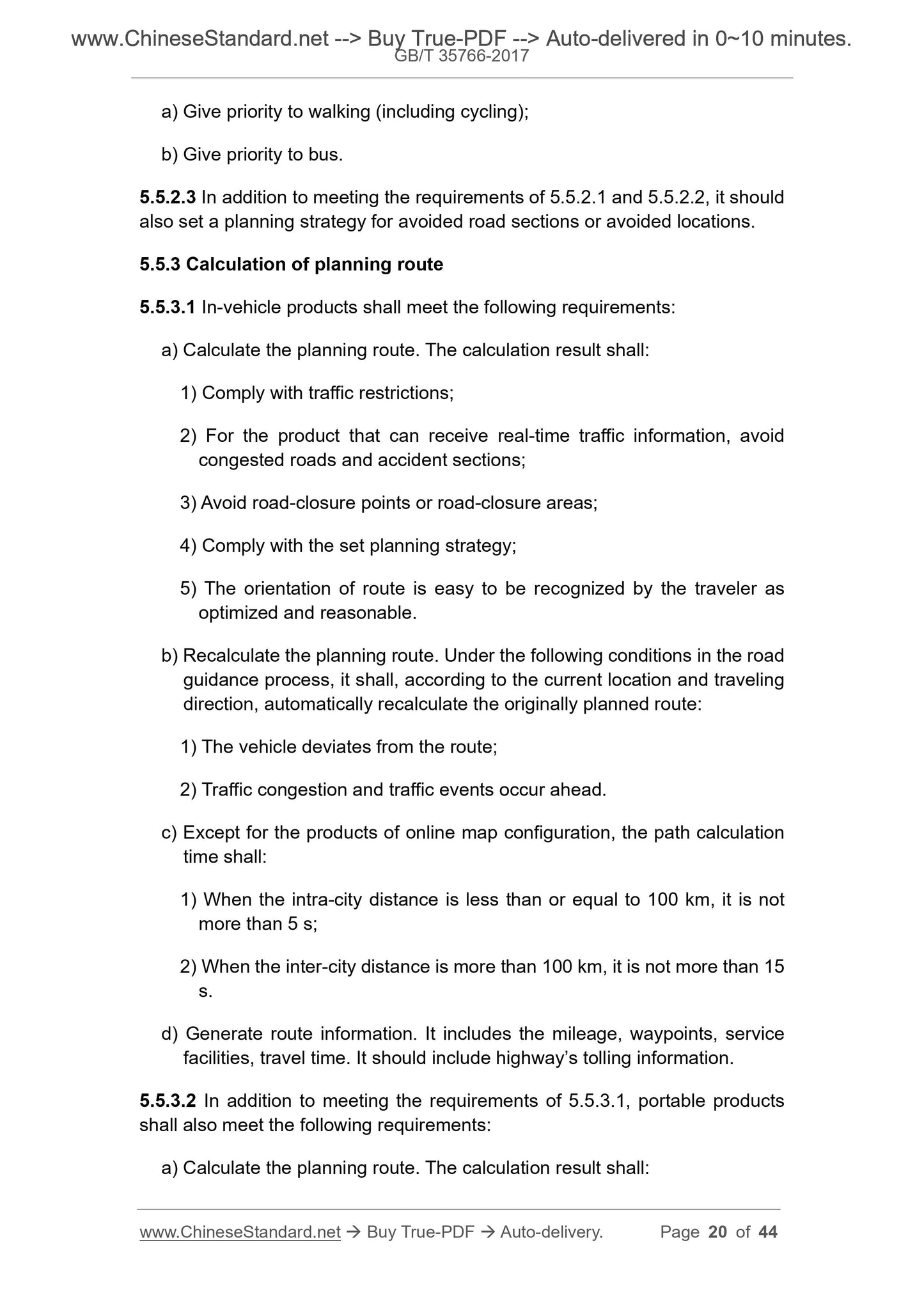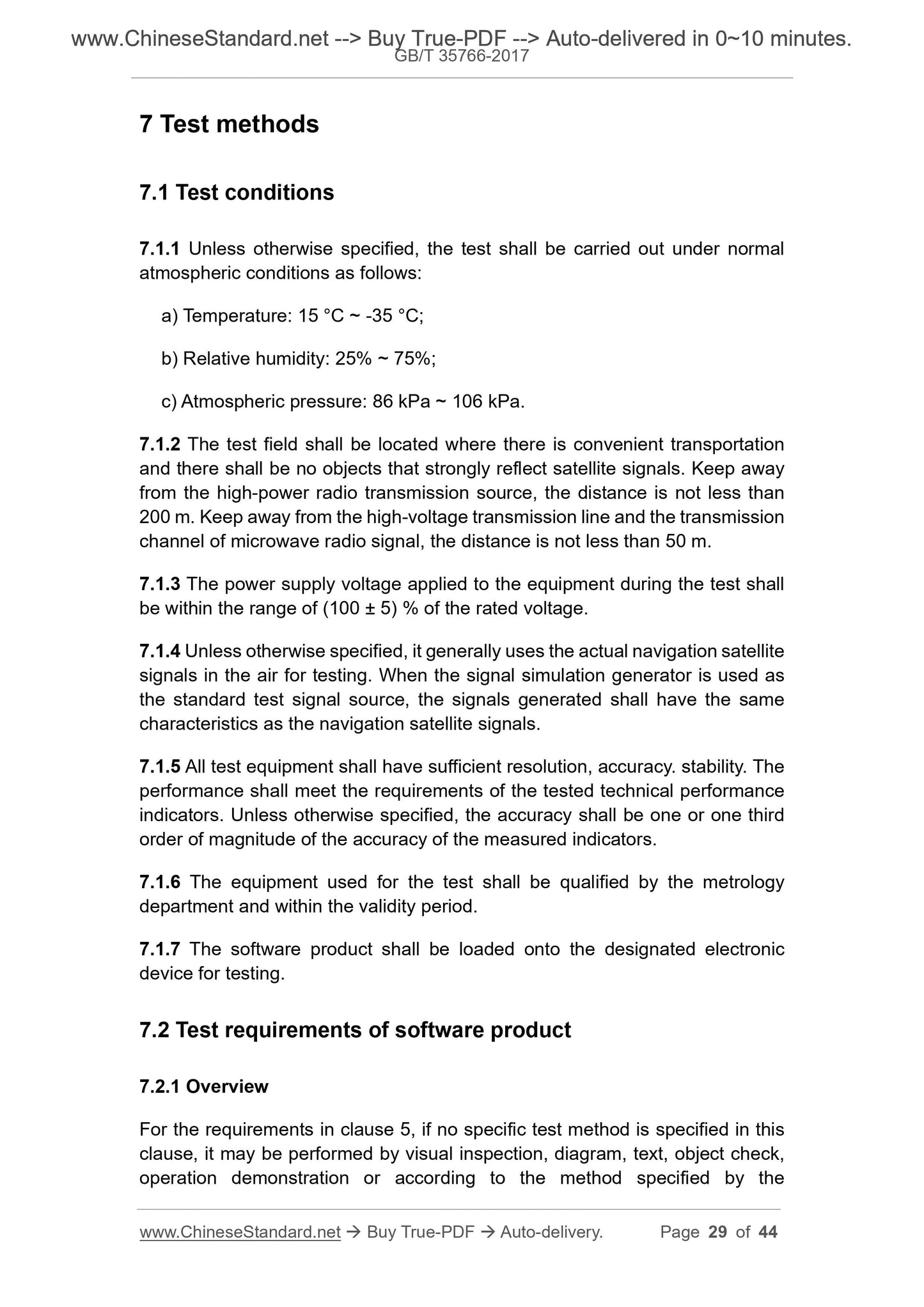1
/
of
12
www.ChineseStandard.us -- Field Test Asia Pte. Ltd.
GB/T 35766-2017 English PDF (GB/T35766-2017)
GB/T 35766-2017 English PDF (GB/T35766-2017)
Regular price
$290.00
Regular price
Sale price
$290.00
Unit price
/
per
Shipping calculated at checkout.
Couldn't load pickup availability
GB/T 35766-2017: General specification for GNSS navigation product based map
Delivery: 9 seconds. Download (and Email) true-PDF + Invoice.Get Quotation: Click GB/T 35766-2017 (Self-service in 1-minute)
Newer / historical versions: GB/T 35766-2017
Preview True-PDF
Scope
This standard specifies the form, composition, function, requirements, testmethods, quality assessment procedures, marking, packaging, transportation,
storage, instruction for use of GNSS navigation product-based map.
This standard applies to the production, testing, inspection, application of
satellite navigation-positioning products based on navigation electronic-maps.
Basic Data
| Standard ID | GB/T 35766-2017 (GB/T35766-2017) |
| Description (Translated English) | General specification for GNSS navigation product based map |
| Sector / Industry | National Standard (Recommended) |
| Classification of Chinese Standard | A75 |
| Classification of International Standard | 07.040 |
| Word Count Estimation | 28,217 |
| Date of Issue | 2017-12-29 |
| Date of Implementation | 2018-07-01 |
| Quoted Standard | GB/T 191-2008; GB/T 2423.1-2008; GB/T 2423.2-2008; GB/T 2423.3-2016; GB/T 2423.5-1995; GB/T 2423.10-2008; GB/T 2828.1-2012; GB/T 2829-2002; GB/T 4857.5-1992; GB/T 5296.1; GB/T 6388-1986; GB/T 9254-2008; GB/T 13384-2008; GB/T 17626.2-2006; GB 18030-2005 |
| Regulation (derived from) | National Standards Announcement No. 32 of 2017 |
| Issuing agency(ies) | General Administration of Quality Supervision, Inspection and Quarantine of the People's Republic of China, Standardization Administration of the People's Republic of China |
| Summary | This standard specifies the form, composition, function, requirements, test methods, quality assessment procedures, and signs, packaging, transportation, storage and use instructions of map navigation and positioning products. This standard is applicable to the production, testing, inspection and application of satellite navigation and positioning products based on navigation electronic maps. |
Share
